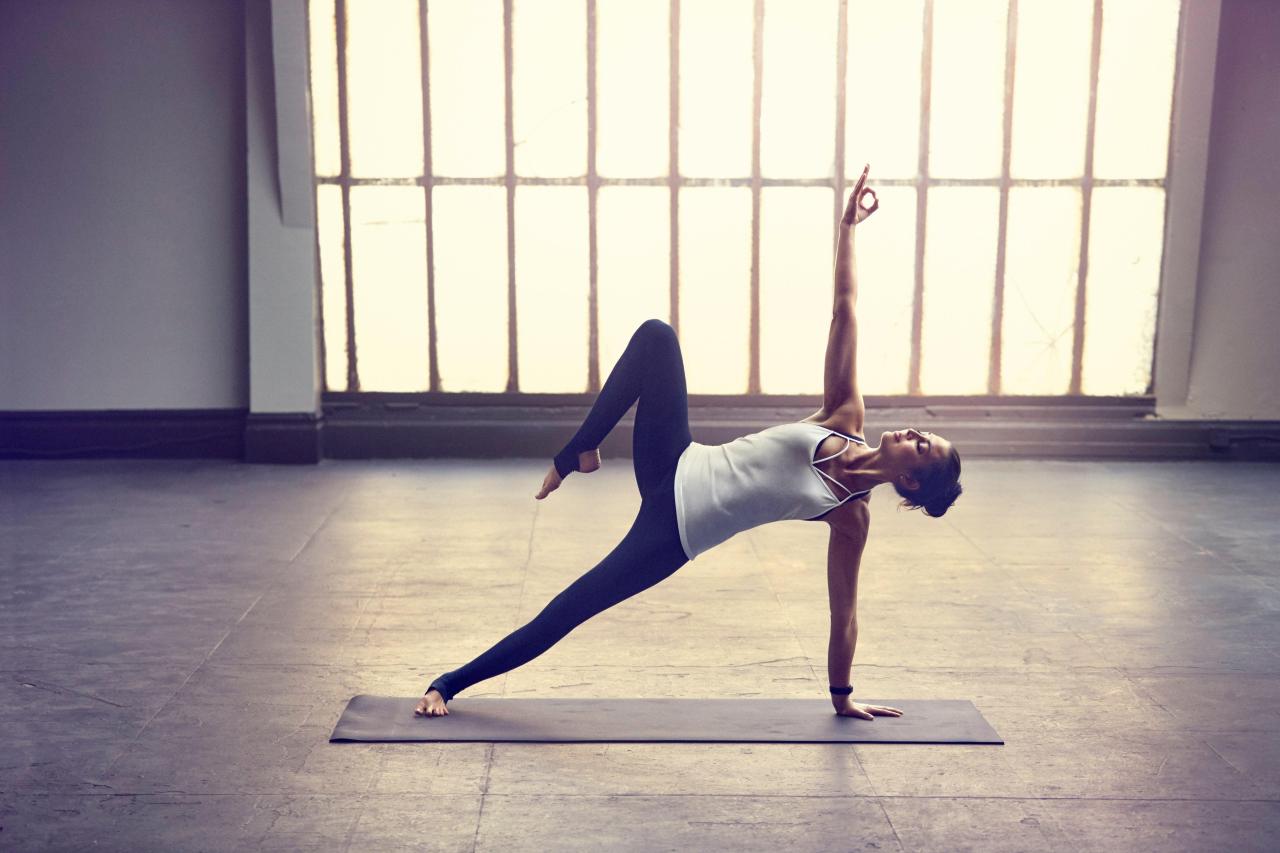Yoga for Beginners takes center stage, inviting you into a world where flexibility, strength, and mental well-being converge in a harmonious flow. Get ready to dive into the essentials of yoga practice tailored just for you.
Introduction to Yoga for Beginners

Yoga is a fantastic way for beginners to improve their overall health and well-being. Not only does it help increase flexibility and strength, but it also has numerous mental benefits.
Benefits of Yoga for Beginners
- Improves flexibility: Yoga poses help stretch and lengthen muscles, increasing flexibility over time.
- Builds strength: Holding poses and flowing through sequences can help build muscle strength.
- Promotes mental well-being: Yoga encourages mindfulness, relaxation, and stress relief through breathing techniques and meditation.
Types of Yoga Suitable for Beginners
- Hatha Yoga: Focuses on basic poses and breathing exercises, perfect for beginners.
- Vinyasa Yoga: Involves flowing sequences that build strength and flexibility.
- Yin Yoga: A slower-paced practice that targets deep connective tissues and joints.
Tips for Starting a Yoga Practice as a Beginner, Yoga for Beginners
- Find a beginner-friendly class or instructor to guide you through the basics.
- Start with simple poses and gradually work your way up to more advanced ones.
- Listen to your body and take breaks when needed to avoid injury.
Basic Yoga Poses for Beginners: Yoga For Beginners
Yoga poses, also known as asanas, are essential for beginners to build strength, flexibility, and mindfulness. Here are some basic yoga poses that are perfect for beginners to start their yoga journey:
Mountain Pose (Tadasana)
In Mountain Pose, stand tall with feet hip-width apart, arms by your sides, and palms facing forward. This pose helps improve posture, balance, and focus.
Child’s Pose (Balasana)
To perform Child’s Pose, kneel on the floor, sit back on your heels, and extend your arms forward with palms resting on the ground. This pose helps relieve stress, tension in the back, and aids in relaxation.
Downward Facing Dog (Adho Mukha Svanasana)
Start on your hands and knees, lift your hips up and back, forming an inverted V-shape with your body. Downward Facing Dog helps stretch the hamstrings, calves, and shoulders while building upper body strength.
Warrior I (Virabhadrasana I)
Step one foot forward into a lunge position, bend the front knee at a 90-degree angle, and extend arms overhead. Warrior I strengthens the legs, opens the hips, and improves concentration.
Corpse Pose (Savasana)
Lie flat on your back with arms by your sides, palms facing up, and eyes closed. Corpse Pose allows for deep relaxation, reduces stress, and promotes a sense of calmness.
Remember to listen to your body and modify these poses as needed to suit your level of flexibility and strength. Enjoy your yoga practice and embrace the journey of self-discovery and well-being!
Breathing Techniques in Yoga
Proper breathing is a crucial aspect of yoga practice as it helps to calm the mind, increase focus, and connect the body with the mind. By incorporating specific breathing techniques like pranayama, beginners can enhance their yoga experience and deepen their practice.
Pranayama Breathing Techniques
- Ujjayi Breath: Also known as the “victorious breath,” this technique involves breathing in and out through the nose while slightly constricting the back of the throat. It creates a soothing sound and helps to regulate the flow of breath.
- Kapalabhati Breath: This rapid and forceful breathing technique helps to cleanse the body by releasing toxins. Beginners can start by practicing short rounds of Kapalabhati breath and gradually increase the duration.
- Nadi Shodhana (Alternate Nostril Breathing): This technique involves breathing through one nostril at a time, alternating between the left and right. It helps to balance the energy channels in the body and promotes a sense of calmness.
Incorporating Breath Work into Yoga Practice
- Begin by finding a comfortable seated or lying position and bring awareness to your breath.
- Focus on breathing deeply and slowly, expanding the belly on the inhale and contracting on the exhale.
- As you move through yoga poses, synchronize your breath with each movement. Inhale as you expand or lengthen, and exhale as you contract or fold.
- Practice specific pranayama techniques before or after your yoga session to enhance relaxation and mindfulness.
Yoga Equipment and Apparel for Beginners

When starting out with yoga as a beginner, it’s important to have the right equipment and apparel to enhance your practice. Let’s explore the essential items you’ll need to get started.
Essential Yoga Equipment
- Yoga Mat: A good quality yoga mat provides cushioning and support during poses. Look for a non-slip mat to prevent injuries.
- Yoga Blocks: Blocks are great for modifying poses and providing support for beginners who may not be as flexible.
- Yoga Strap: Straps help with stretching and deepening poses by assisting in reaching further without straining.
Types of Yoga Mats
- Basic PVC Mat: Affordable and durable, ideal for beginners.
- Natural Rubber Mat: Eco-friendly and provides excellent grip and cushioning.
- Travel Mat: Lightweight and easily portable for on-the-go practice.
Choosing Yoga Apparel
- Comfort is key: Opt for breathable, stretchy fabrics that allow for easy movement.
- Avoid baggy clothes: Fitted attire prevents fabric from getting in the way during poses.
- Consider moisture-wicking materials: Helps to keep you dry and comfortable during a sweaty session.
Where to Purchase Quality Yoga Equipment
- Local Yoga Studios: Often carry a selection of mats, blocks, and straps for purchase.
- Sporting Goods Stores: Look for reputable brands that specialize in yoga gear.
- Online Retailers: Websites like Amazon and YogaOutlet offer a wide range of options for all your yoga needs.
